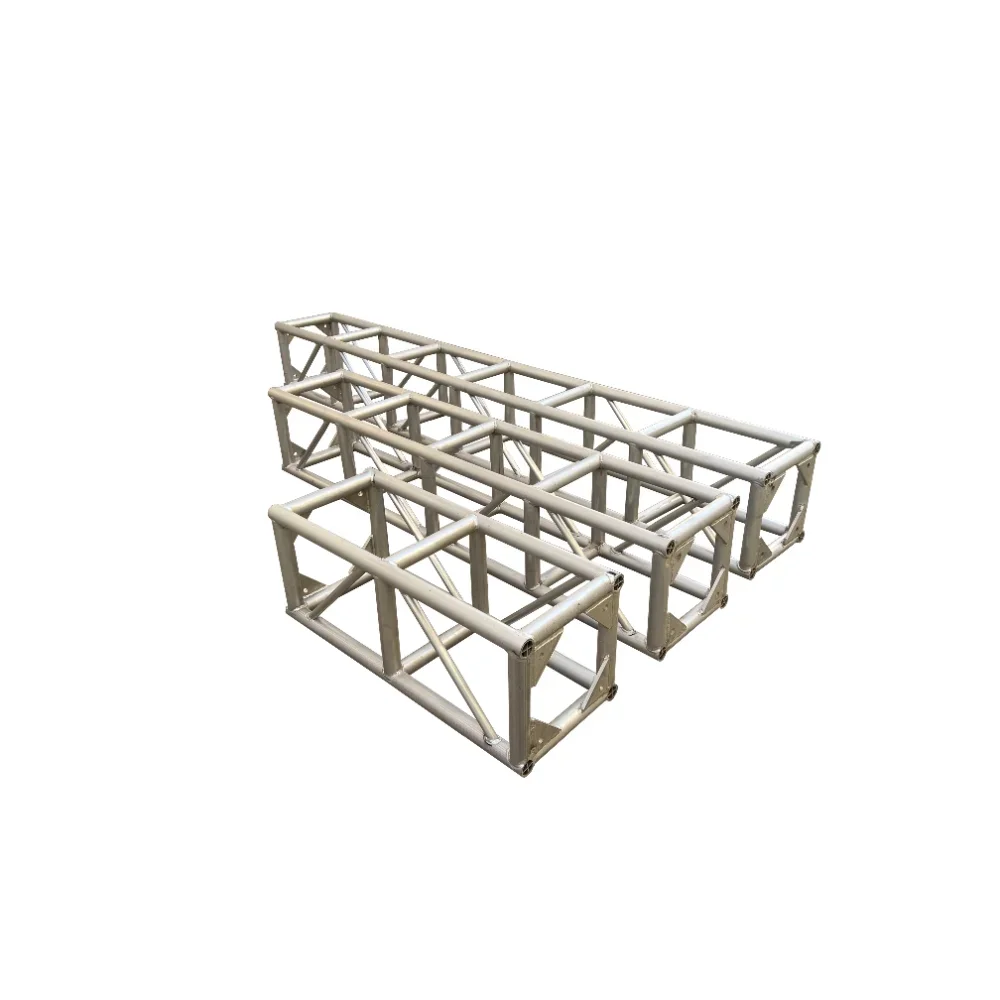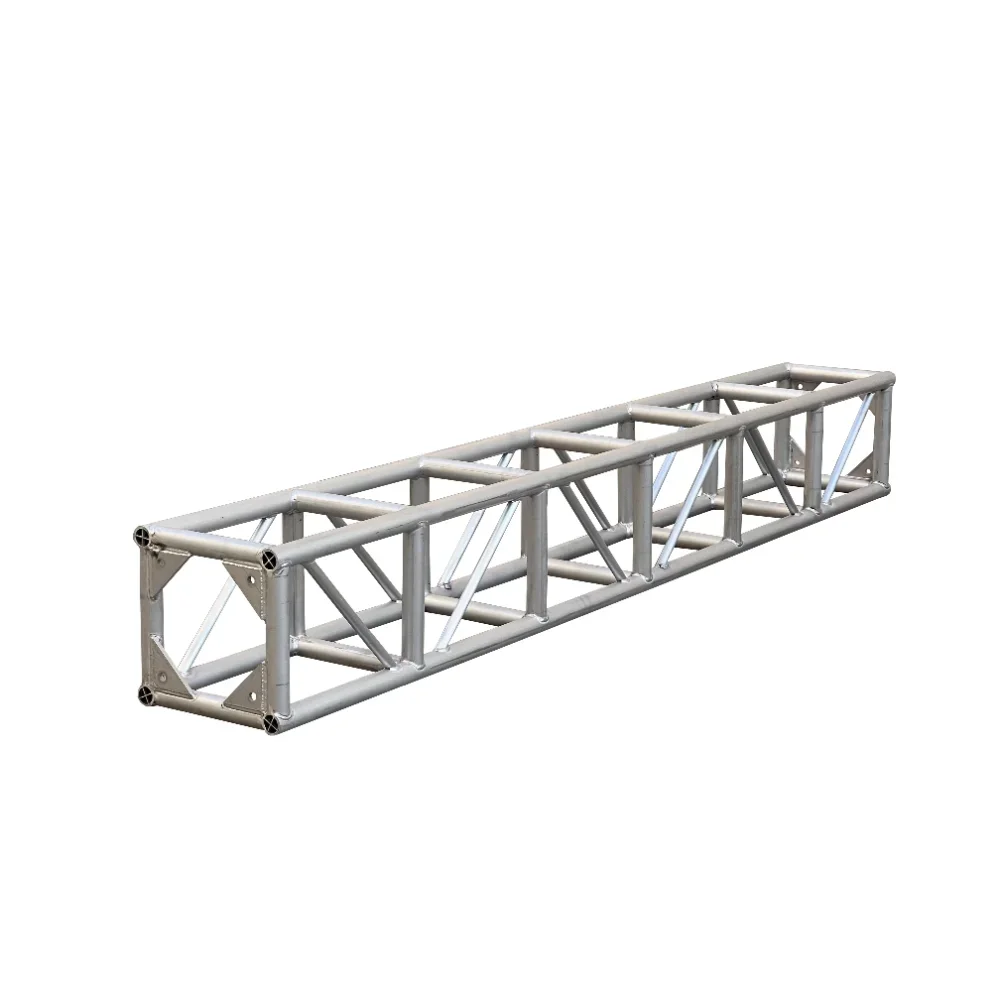Exploring the structural marvel of a triangle plate truss unveils its efficiency in bearing loads and distributing forces. This innovative design, characterized by triangular elements, offers exceptional strength-to-weight ratios, making it a preferred choice in modern engineering projects. The strategic arrangement of beams and nodes in a triangle plate truss ensures optimal stability and resilience, enhancing the overall structural integrity. By harnessing the geometric properties of triangles, this truss design maximizes load-bearing capacity while minimizing material usage, exemplifying sustainable engineering practices. Embracing the versatility and reliability of triangle plate trusses opens doors to innovative solutions for diverse construction challenges.
Understanding Triangle Plate Trusses
Structural Significance
Triangle plate trusses are structural components used in construction to provide stability and support. These trusses consist of interconnected triangular units that distribute loads effectively. The triangular shape enhances the truss's strength and rigidity, making it a popular choice in various construction projects.
Versatility for Lighting Setups
Triangle plate trusses are widely utilized in lighting setups due to their versatility. They offer a secure mounting solution for lighting fixtures, ensuring safe and stable installations. The design of these trusses allows for easy attachment of lights at different angles, enabling customized lighting arrangements for events, concerts, and stage productions.
Types of Base Plates
-
Steel Base Plates
-
Steel base plates are commonly used with triangle plate trusses for their durability and strength. These plates provide a solid foundation for the truss system, ensuring reliable support even under heavy loads.
-
-
Aluminum Base Plates
-
Aluminum base plates offer a lightweight alternative to steel plates while maintaining structural integrity. They are preferred for applications where weight is a concern, such as portable truss systems for events and exhibitions.
-
Benefits of Using Triangle Plate Trusses
Strength-to-Weight Ratio
Triangle plate trusses are renowned for their exceptional strength-to-weight ratio, making them highly efficient in supporting heavy loads without adding unnecessary bulk. This feature ensures structural stability while minimizing material usage, ideal for various construction projects.
The triangular shape of these trusses distributes weight evenly across all sides, preventing concentrated stress points and enhancing overall durability. This design significantly reduces the risk of structural failure, providing a reliable framework for buildings, bridges, and other structures.
Ease of Assembly
Assembling and disassembling triangle plate trusses is remarkably straightforward, thanks to their simple yet effective design. With fewer components compared to traditional truss systems, these structures can be quickly set up and taken down, saving valuable time and labor costs during construction projects.
The interlocking plates of these trusses fit seamlessly together, eliminating the need for complex connectors or specialized tools. This user-friendly assembly process not only streamlines construction timelines but also enhances on-site safety by reducing the risk of accidents associated with intricate installations.
Cost-Effectiveness
One of the most significant advantages of using triangle plate trusses lies in their cost-effectiveness, especially for large-scale projects. The efficient use of materials combined with the ease of assembly translates to substantial savings in both material expenses and labor costs.

Key Components of Triangle Plate Trusses
Base Plates
Triangle plate trusses commonly feature base plates that provide stability and support to the structure. These plates are essential for distributing the load evenly across the truss system.
Base plates play a crucial role in ensuring the overall structural integrity of the triangle plate truss. They are typically made of durable materials like steel, offering robust support for the entire framework.
Connectors and Clamps
Conical connectors serve as key components in triangle plate trusses, facilitating the seamless assembly of the structure. These connectors ensure a secure fit between different truss sections, enhancing stability.
Moreover, clamps are utilized to fasten various parts of the truss together securely. They play a vital role in maintaining the structural integrity of the truss system, preventing any potential disconnection during use.
Aluminum for Durability and Weight Reduction
The incorporation of aluminum in triangle plate trusses contributes significantly to their durability and weight reduction. Aluminum is known for its lightweight yet sturdy properties, making it an ideal material for truss construction.
By utilizing aluminum in the manufacturing process, triangle plate trusses achieve a perfect balance between strength and weight. This not only enhances the portability of the truss system but also ensures long-term durability.
Compatibility Between Truss Components
Ensuring compatibility between different truss components is paramount in constructing a reliable triangle plate truss system. Each component, including base plates, connectors, and clamps, must align seamlessly to guarantee structural stability.
Compatibility issues can lead to structural weaknesses and compromise the overall safety of the truss system. Therefore, meticulous attention to detail during assembly is crucial to avoid any compatibility-related challenges.
Applications in Stage Construction
Lighting Support
Triangle plate trusses play a crucial role in supporting lighting equipment in theaters. These trusses provide a sturdy framework for hanging various types of lights, ensuring they are positioned correctly to illuminate the stage effectively. The triangular shape of the trusses enhances their strength and stability, making them ideal for bearing the weight of heavy lighting fixtures.
Sound Equipment Stability
In stage construction, triangle plate trusses are also utilized to secure sound equipment such as speakers and microphones. By attaching these devices to the trusses, sound engineers can optimize the acoustics of the performance space. The rigidity of triangle plate trusses prevents any swaying or movement of the equipment, maintaining a consistent sound quality throughout the event.
Popular Stage Designs
Several iconic stage designs incorporate triangle plate trusses to create visually appealing and functional structures. For example, the "in-the-round" stage layout often features an overhead grid of trusses arranged in triangular patterns. This design allows for 360-degree audience views and versatile lighting arrangements. Another popular use is in concert stages, where triangle plate trusses support elaborate lighting displays that enhance the overall concert experience.

Applications in Exhibitions
Flexible Layouts
Triangle plate trusses offer immense versatility when it comes to building exhibition booths and displays. Their square shape allows for easy integration into various booth designs, enabling exhibitors to create unique and captivating spaces. These trusses play a crucial role in supporting the structure of exhibition setups, providing stability and strength to the overall display.
Exhibitors often rely on triangle plate trusses to facilitate flexible layouts within their booths. By utilizing these trusses, they can easily adjust the configuration of their displays to suit different event requirements. Whether it's a trade show, art exhibition, or product launch, the adaptability of triangle plate trusses allows exhibitors to transform their spaces quickly and efficiently.
Triangle plate trusses are instrumental in enabling exhibitors to achieve seamless transitions between different booth layouts. With their modular design and easy assembly, exhibitors can reconfigure their booths with minimal effort, making them ideal for events with changing spatial needs. This flexibility not only saves time but also enhances the overall visitor experience by presenting dynamic and engaging displays.
Visual Impact
In addition to their functional benefits, triangle plate trusses also contribute significantly to the aesthetic appeal of exhibitions. The clean lines and geometric precision of these trusses add a modern and sophisticated touch to booth designs, elevating the visual impact of displays. Exhibitors can use triangle plate trusses creatively to enhance the overall look and feel of their booths, attracting more attention from visitors.
The square profile of triangle plate trusses lends a sense of symmetry and balance to exhibition setups, creating a visually pleasing environment for attendees. Whether used as structural elements or decorative accents, these trusses play a key role in defining the visual identity of an exhibition booth. Exhibitors can leverage the versatility of triangle plate trusses to showcase their products or services in a compelling and visually appealing manner.
-
Triangle plate trusses enable flexible booth layouts
-
They support quick reconfiguration for different events
-
Triangle plate trusses enhance the aesthetic appeal of exhibitions
Choosing the Right Triangle Truss Tops and Bases
Base Plates
When selecting truss base plates for a project, it is crucial to consider the weight-bearing capacity required. Opt for thick aluminum diagonals in the base plates for enhanced stability and durability. Ensure the base plates are compatible with global truss systems to guarantee a secure fit.
Matching Truss Tops
To ensure structural integrity, match the triangle aluminum truss tops with the intended load and design of your project. Avoid using inferior base plates that may compromise the overall stability of the truss system. Always prioritize safety by selecting truss tops that can withstand the anticipated weight load.
Material Quality and Compatibility
When choosing components for your triangle plate truss system, prioritize material quality and compatibility. Look for triangle bolt utility that is made from high-quality aluminum to ensure longevity and reliability. Verify that all components are global truss compatible to prevent any issues during assembly.

Installation Tips and Best Practices
Proper Alignment
During the installation of triangle plate truss, it is crucial to ensure proper alignment to guarantee structural stability. Align the truss components accurately to prevent any misalignment issues that could compromise the overall integrity.
When securing the truss elements, make sure to use high-quality fasteners that are suitable for the specific truss material. This will help in maintaining the structural integrity of the truss system over time.
Safety Gear
Using safety gear is imperative when working with triangle plate trusses. Prioritize safety by wearing protective equipment such as gloves, helmets, and safety goggles to prevent any potential injuries during the installation process.
Refer to the manufacturer's guidelines for recommended safety practices and assembly instructions. Manufacturers often provide detailed instructions on how to safely assemble and install truss systems, ensuring a secure and hazard-free setup.
Regular Inspections
To ensure stability and safety during the use of triangle plate trusses, regular inspections are essential. Periodically check the truss system for any signs of wear, damage, or loosening connections that may affect its stability.
Maintenance and Safety Considerations
Regular Checks
Regular maintenance checks are crucial for prolonging the lifespan of triangle plate truss. Inspect the high-grade aluminum construction for any signs of wear or damage. Look out for cracks, dents, or loose clamps that could compromise the truss's structural integrity.
It is recommended to conduct these checks before and after each use to ensure the truss remains in optimal condition. By identifying and addressing issues promptly, you can prevent potential accidents during setup or events.
Safety Protocols
When setting up or dismantling the triangle plate truss, prioritize safety at all times. Follow manufacturer guidelines for assembly and disassembly processes to avoid mishaps. Ensure that all connections are secure, and the truss is properly supported before loading equipment onto it.
Always use appropriate personal protective equipment (PPE) such as gloves and helmets when handling truss components. Educate all personnel involved in the setup about safety procedures to minimize risks of injuries.
Proper Storage
Proper storage is key to preventing damage to triangle plate truss components when not in use. Store the truss in a dry, well-ventilated area away from direct sunlight or moisture. Avoid stacking heavy objects on top of the truss to prevent deformation or bending of aluminum beams.
Consider investing in storage cases or bags specifically designed for truss components to keep them organized and protected. By storing the truss properly, you can extend its lifespan and maintain its structural integrity for future use.

Closing Thoughts
The exploration of triangle plate trusses has shed light on their structural efficiency, versatility, and safety considerations. Understanding the benefits and key components, along with practical applications in stage construction and exhibitions, underscores their significance in the event industry. Choosing appropriate tops and bases, following installation tips, and adhering to maintenance guidelines are crucial for ensuring the longevity and reliability of triangle plate trusses. Emphasizing safety protocols is paramount to safeguard both equipment and individuals involved in their use. By incorporating these insights into practice, one can elevate the quality and safety standards of event setups using triangle plate trusses.
Exploring the Versatility of Triangle Plate Bolt rruss on Stage
